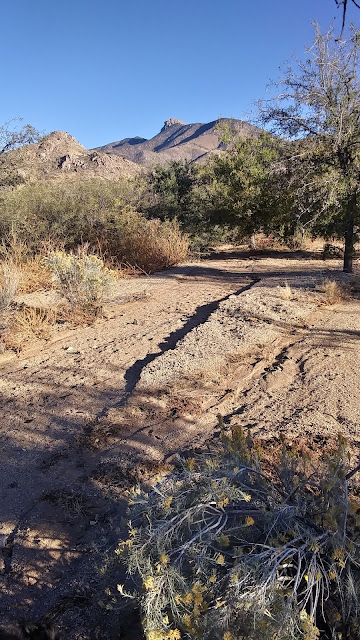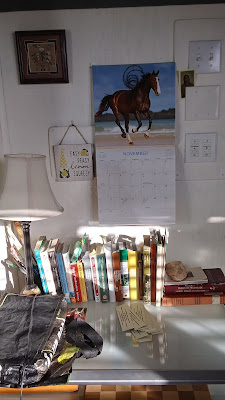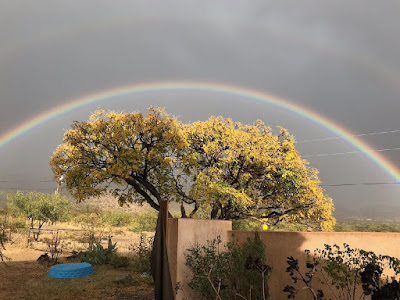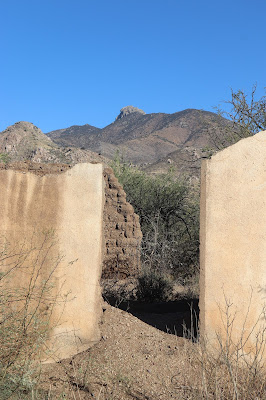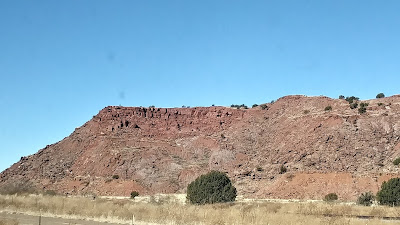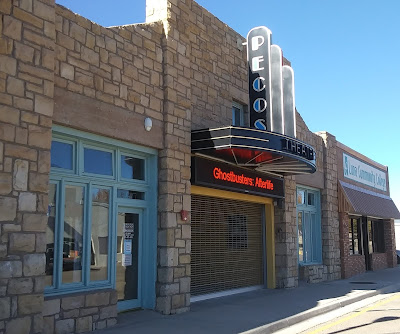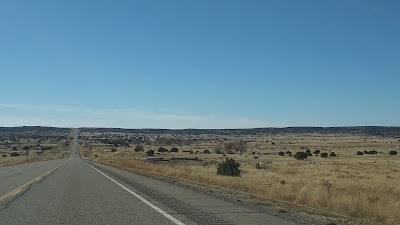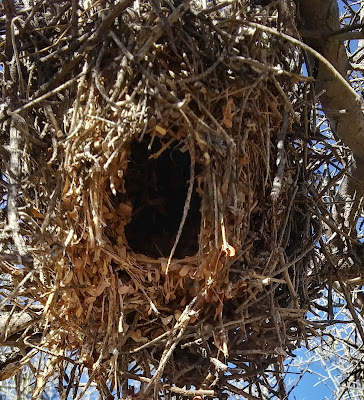 |
| Who lives here? Or lived here? |
My high desert day usually begins in the dark, 5:30 a.m. on average. I like making coffee before first light and watching dawn break a while later over the low mountains to the east. Nights now are in the 30-degree range, so some mornings there is a thin skin of ice on the birdbath. The birds know when a sunny day is coming and are out calling and singing by the time the sun comes over the horizon. But that comes later.
With almost a full year’s experience under his nonexistent belt, Peasy knows we won’t be rushing outdoors at first light or even sunrise, and he waits patiently (mostly) while I drink my coffee and read or write a letter or journal entry or catch up online with distant friends. But he is certainly ready for adventure and exploration the minute he senses that I am! The Artist will be ready, too, by the time Pease and I get back from our morning rambles, usually about an hour later.
 |
| Ready to go! |
 |
| But Mom needs to bundle up first. |
The sun is bright, but the air is cold when we first go out in the morning, and I bundle up accordingly. A jacket I found in a Traverse City, Michigan, Goodwill store in 2015, on the $1 sale rack because of a tear at the end of one sleeve, still works for me perfectly in Dos Cabezas, the rough leather brushing off thorns the way an umbrella sheds rain. Old dog-chewed shoes work, too (Peasy did that, not Sarah), as does a terribly unflattering wide-brimmed hat. Here one must protect against both cold and sun on early mornings -- go out without a brim in the morning, and walking east is walking blind.
A wash tells the story of summer rains, or monsoons, as some here call them. During a monsoon, washes turn from dry, sandy beds to torrential rivers in minutes. “Do not enter when flooded,” say signs along the roads, and even now, many weeks later, ghostly images of currents remain to show paths taken by relentless, rapidly flowing water.
The color green also tells of plenteous summer rains. So much green still, in November!
But there is red, also, and I need to learn the name of this ground-hugging plant, which can also be found along the edges of the highway, breaking through the pavement.
And here is Peasy again. Because you never tire of Peasy pictures, do you? Isn't he a pretty boy?
As the desert day continues, it will often include a trip into our nearby town of Willcox, but I’ll save Willcox for another day and tell you now about evening and night in the high desert. In late afternoon, an insect chorus starts up and continues into dusk. Are the singers crickets or cicadas or a blended choir of both? Whatever they are, they settle down as darkness falls. Everything goes quiet then unless a dog barks in the distance. It is then that stars take ownership of the desert – stars, jets high overhead, too far away to hear, and maybe a silent satellite zipping and blinking by. Once in a while coyotes yip, that familiar sound that reminded me of our Michigan home the first winter we spent here in the ghost town.
Morning, afternoon, evening -- I feel very peaceful here. No doubt part of my contentment is the freedom of seasonal retirement: no schedule to keep, no daily obligations except to care for my little family. I haven't yet finished the exciting book about the steeplechase riding woman in Czechoslovakia. So many possibilities present themselves every hour, it's hard to settle down!
Who lives here in this ghost town, delighting in open space and in friendly neighbors? For now, the Artist and I and our special needs dog are right at home. I'll tell you more about desert dog's behavior here in my next post. Or the one after that, maybe. Because who knows what the future holds?
 |
| The sandhill cranes have come for the winter, too. |

